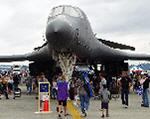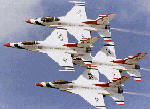
|
Description
| Notes: RH-3A modified for drone target recovery, torpedo launch/recovery, logistics support, range surveillance, and search and rescue. | ||
| Manufacturer: | Sikorsky | |
| Base model: | H-3 | |
| Designation: | RH-3 | |
| Version: | A | |
| Nickname: | SEA KING | |
| Designation System: | U.S. Tri-Service | |
| Designation Period: | 1962-Present | |
| Basic role: | Helicopter | |
| Modified Mission: | Reconnaissance | |
| See Also: | ||
Specifications
Propulsion
Performance
Recent comments by our visitors
| Bob Schultz Spotsylvania, VA | I was an RH-3A Aircrewman and ADJ-3, in HC-5, NAS Ream Field, Imperial Beach, CA, from 1967-8. Along with ops in the SOCAL area, we did short cruises on the Catskill (?) out of Long Beach prior to the Detachment moving to Japan. We had fun in that aircraft, back then we only towed the Vermeer 101 sweep; however, I recall, prior to my discharge in 1968, a new equipment being delivered to the Det, it was the Mk-104 acoustic sweep.
There are many folks who have cool stories associated with the RH-3...Thanks for the opportunity to contribute! 02/26/2008 @ 07:55 [ref: 19785] |
| Joe Killough Pungoteague, VA | While I was in VC-8 at Roosy Roads, PR, we recieved 3 of the RH-3A's. We used them for Drone recovery and utility work. What I remember most about them was the had cargo doors on both sides and the deck went all the way to the back, (no wall behind the door) This was about 1971. 05/07/2006 @ 07:33 [ref: 13220] |
| Ron Milam Missoula, MT | The RH-3A helos were the second generation of airborne mine countermeasures. 1965 3 RH-3As were stationed aboard the USS Ozark (East Coast)and 3 RH-3As were stationed aboard the USS Catskill (West Coast) West Coast details = the helos were attached to HC-5 and trained off the coast of Calif. As the USS Catskill completed refitting, the helo crew boarded Jan. 8 1969 and transfered to HC-7 stationed in Atsugi Japan. For a year and half the Detachment 113 flew sweep missions in many countries. Detachment disestablished August 1970.-- Ron Milam, ADJ-3 Det 113 mechanic, flight deck director 02/04/2006 @ 04:44 [ref: 12407] |
| Jerry Balderson Kalaheo, HI | Outrider 5 gets a visit
Recently OR 5, our static display helicopter got a visit from a not so dry “Sandcrab”.(A name I learned in Bootcamp over 30 years ago given to civil service employees because “Sand crabs scurry around the water, but never get wet.”) Don Turnage, a retired Program Manager from Naval Surface Warfare Center Dahlgren Division’s Coastal Systems Station in Panama City, FL and his wife were visiting Kauai. Don especially wanted to visit the helicopter in which he made a ditching at sea in 1966. Don recalled the incident. “That aircraft was in Panama City in August 1966,” “It was assigned to the Mine Development Unit which we then called our Air Operations Activity. I had been working here for about two years in the Airborne Mine Countermeasures branch that was the first branch established in Panama City for AMCM,” he recalled. “One morning I was scheduled to fly as a technical observer aboard this very same helo that Balderson and his crew recently restored. The mission was part of the tech evaluation for the Mk 104 acoustic device. It was about noon when we were towing a Mk 104 from 147140 off Shell Island when things started to go ‘downhill’,” Turnage said. “The 104 went unstable, came out of the water reducing tension on the tow cable and allowed the Tow Boom to drop to the vertical position. When the device re-entered the water it caused the Tow Boom to rapidly snap back toward the helo where it then broke the upper limit ‘stop’ and then proceeded to enter the tail rotor. The Boom sheared pieces off four of the five rotor blades.” “The aircraft began vibrating so badly that some of the instruments actually popped out of the console,” Turnage continued. “In seconds, we had hit the water. We were about three miles off Shell Island at about 75 to 100 feet off the surface so it didn’t take long to find ourselves in the water.” Turnage laughed as he continued his story. “I wasn’t scared — actually it happened so fast none of us had time to worry.” “When the tail rotor started to come apart, one of the blades tore through the fuselage, putting a hole in the side and breaking the rear bubble window. The blade narrowly missed one of the crewmen who was seated on the deck at the rear of the aircraft.” Turnage said. “I was sitting in the jump seat and the blade wound up at my feet!” “As we hit the water, the aircraft’s emergency floatation gear deployed. That allowed us time to get out and into life rafts,” he said. “I had on a flight suit but they hadn’t issued me flight boots. I was wearing a brand new pair of shoes and knew I didn’t want to swim in shoes anyway so I stashed them behind some hydraulic lines in the overhead and got out of the aircraft into the water, then climbed into the raft.” Turnage related that they only had enough single man life rafts to accommodate four people (the normal crew size) so the pilot, LT Walt Furantini ordered Turnage and the crew into the rafts while he stayed in the water supported by his life vest. The helo had gone down so rapidly that the pilot was unable to transmit an emergency message. Once in the water they couldn’t transmit since the antennas were located on the belly of the aircraft and was now under water. There was, according to Turnage, a fishing boat about four miles off in the distance. The helo continued to float but was beginning to take on water in the avionics compartment. The crew attempted to get the attention of the people aboard the fishing boat by sending off flares. When that failed, they set off smoke signals — still no response from the vessel. “I don’t know why they didn’t see the flares or smoke, but after about an hour in the water, the boat had started moving slowly toward our position,” Turnage recalled. “It seemed like it was taking a long time to close on us and we still didn’t know if they saw us, so we began to paddle in their direction.” “Finally,” Turnage said, “they spotted us and got us aboard. They said they saw the helo floating in the water but assumed we were doing some kind of test and just ignored it!” “Once we were aboard the fishing boat we radioed the base,” Turnage said. “We had a PT-boat at the base and it was dispatched to pick us up and tow the helo to St. Andrew State Park. Divers went into the aircraft and started to pump out the water and rig a towline. Once they got the helo to the beach at the park, the base brought in a bulldozer and after laying some runway matting, pulled her out of the water. The helo was finally pulled up to the parking lot at the park and later towed down Thomas Drive to the base.” Turnage sighed as he finished his story. “After we got the helo up on the beach I recovered my new shoes — dry as a bone!” “During my engineering courses in college, they never once offered, “Ditching a Helicopter 101,” he said, “I guess we were very lucky that none of us got hurt.” I’m sure Don is not the only “Sandcrab” that’s ever gotten wet but both he and OR-5 are now high and dry. OR 5 was a year long restoration project by the Aircraft Maintenance Department, Sea Cadets and lots of volunteers, completed in 1999. Jerry Balderson CWO4 Retired Pacific Missile Range Facility, Kauai Hawaii 10/15/2002 @ 21:21 [ref: 5895] |
| Dale E. Feucht Anchorage, AK | The RH-3A was used extensively for Minesweeping in the 1960's. Helicopter Minesweeping was in the developmental stages at that time. I was in Navy Squadron HC-6 in Norfolk, VA.. I about 1970 the first H-53 Minesweeping Squadron.
Thank You, Dale Feucht 12/14/2000 @ 00:58 [ref: 1177] |
Recent photos uploaded by our visitors





